
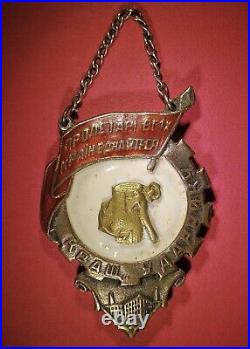
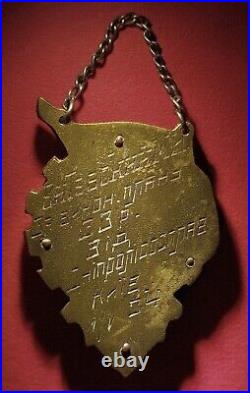
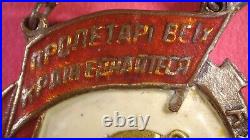
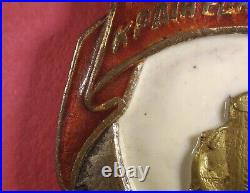
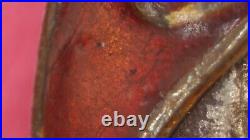
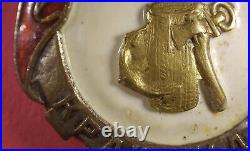
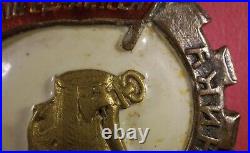

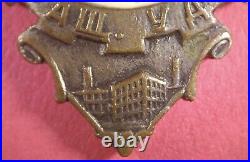
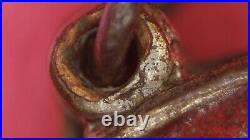
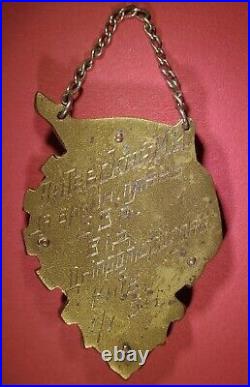
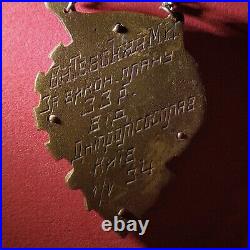
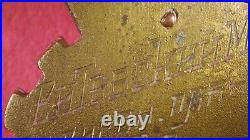
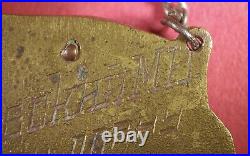

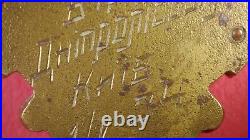
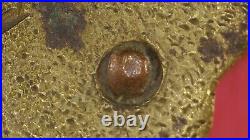
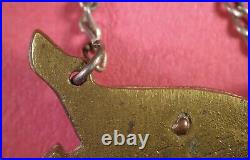
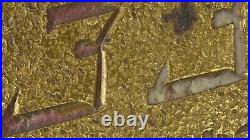
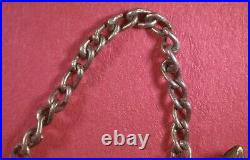
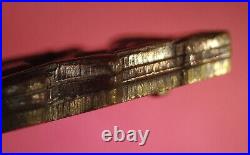
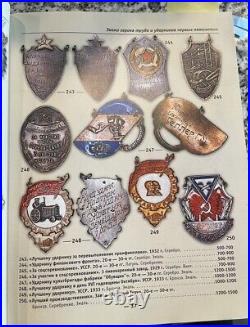
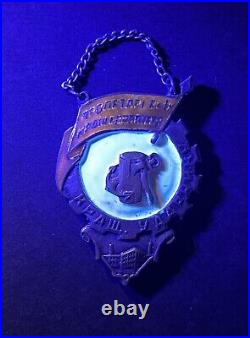

Soviet Badge “To The Best Urdanik” Ukrainian SSR 1934. Workers of the world, unite! “To the best shock worker”. (awarded to) Vitebsky M. For the completion of the plan in year 1933. From the Dniprosplav Factory, Kyiv. Height: 39.52 mm (middle banner to factory). Width: 30.22 mm. Weight: 17.424 g. Variants of these badges were awarded to the best shock workers at numerous Ukrainian factories and agricultural centers throughout the 1930’s following Stalin’s industrialization policy. Many depict the same overall styling of a banner and gear with a factory inset into the lower portion. All types (that I’m aware of) also share a common white enameled background with an image of the given trade of the worker super imposed over it. I was unable to find any particular information about this specific factory within Kyiv however I would imagine it had something to do with metallurgical production given the anchor and axe. The city (Kyiv) figured prominently in Stalin’s Five-Year Plans for industrialisation. In 1932, Dnipropetrovsk’s regional metallurgical plants produced 20 percent of the entire cast iron and 25 percent of the steel manufactured in the Ukrainian SSR. This badge is constructed of bronze and or brass and possibly tombac (various layers) with the obverse showing some silvering, as well as hot baked enamels. Similar examples can be seen in ABEPC #8 on pg 37, 248-249 (see attached image). Overall the condition is good for the age of this piece and an excellent design depicting the industrialization of the period. It shows very light wear on the silvering. Upon closer inspection this piece seems to have had someone re-enamel or touch up the original enamel (not entirely to the standards of the original production). However, this doesn’t detract from the piece when viewing with the naked eye. It is only apparent under a microscope or while viewing in UV light (pictured). The inscription on the reverse is consistent with known examples in content and engraving style. The engraving itself appears to have possibly the remnants of a cleaning creme or polishing paste. For the sake of not scratching the piece I did not attempt to clean it out. Although I don’t believe it would be too difficult to do with a sharp wood splinter of fine fiberglass pen brush. Lastly I believe the chain to be original to this piece. Let me know if you have any questions! 1930’s Kyiv History. In the 1930s, the city suffered terribly from famine and from Stalinization. In 1932-33, the city population, like most of the other Ukrainian territories, suffered from the Holodomor. In Kyiv, bread and other food products were distributed to workers by food cards according to daily norm, but even with cards, bread was in limited supply, and citizens were standing overnight in lines to obtain it. In 1934 the capital of Ukrainian SSR was moved from Kharkiv to Kyiv. The goal was to fashion a new proletariat utopia based on Stalin’s blueprints. The city’s architecture was made over, but a much greater impact on the population was Soviet social policy, which involved large-scale purges, coercion, and rapid movement toward totalitarianism in which dissent and non-communist organizations were not tolerated. In the 1930s the process of destruction of churches and monuments, which started in the 1920s, reached the most dramatic turn. Churches and structures that were hundreds of years old, such as St. Michael’s Golden-Domed Cathedral and the Fountain of Samson, were demolished. Others, such as Saint Sophia Cathedral, were confiscated. The city’s population continued to increase mostly by migrants. The migration changed the ethnic demographics of the city from the previous Russian-Ukrainian parity to predominantly Ukrainian, although Russian remained the dominant language. In the 1930s, the city inhabitants also suffered from the controversial Soviet political policy of that time. While encouraging lower-class Ukrainians to pursue careers and develop their culture (see Ukrainization), the Communist regime soon began harsh oppression of Ukraine’s political freedom, autonomy and religion. Recurring political trials were organized in the city to purge “Ukrainian nationalists”, “Western spies” and opponents of Joseph Stalin inside the Bolshevik party. During this time, numerous historic churches were destroyed or vandalized and the clergy repressed. In the late 1930s, clandestine mass executions began in Kyiv. Thousands of city residents (mostly intellectuals and party activists) were arrested in the night, hurriedly court-martialed, shot and buried in mass graves. The main execution sites were Babi Yar and the Bykivnia forest. Tens of thousands were sentenced to GULAG camps. In the same time, the city’s economy continued to grow, following Stalin’s industrialization policy. Reach out to me with any and all questions you have. All sales are final. Condition and authentication are “as seen”.


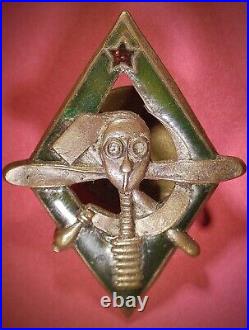
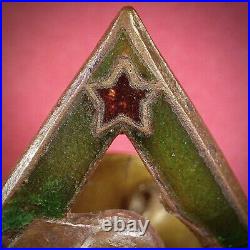
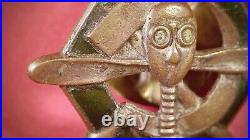
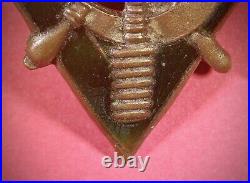

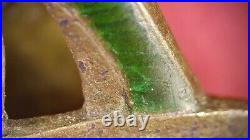

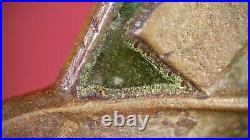

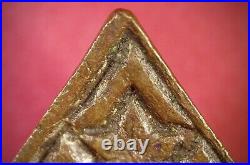
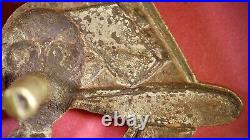
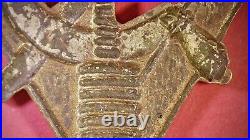



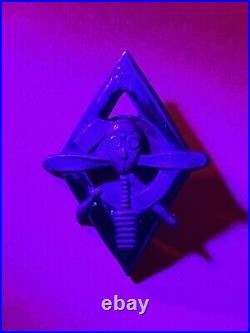


Thank you for looking! Badge for graduates of AVIAKHIM instructor courses. Height: 41.24 mm. Width (prop): 31.09 mm. Weight (w/ screw plate): 6.193 g. Weight w/o screw plate: 4.668 g. Screw length: 8.67 mm. Screw plate width: 16.25 mm. The Society of Friends of Aviation and Chemical. Defense and Industry of the USSR (AVIAKHIM) aimed to further promote the development of aviation, prepare the population for chemical defense and develop the chemical industry. During its existence, the society has issued more than a dozen different signs. It existed from March 1925 until January 23, 1927, when it merged with the Defense Assistance Society (OSO) and received the well -known name – OSOAVIAKHIM. Please note the enamel cracks on the upper right hand side. Many of these items tend to bend easily and the enamel flakes off. Another note is that I don’t think the screw plate is original to the piece (although I’m not sure as I couldn’t find a reference for one). It slides over the top of the worn threads barely catching as it goes along. Ultraviolet image included to show the lack of modern enamel repairs. Reach out to me with any and all questions you have. All sales are final. Condition and authentication are “as seen”.


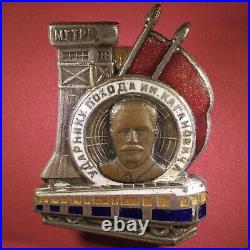
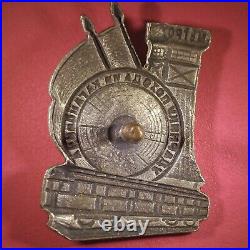
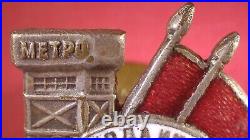
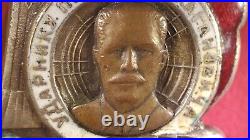
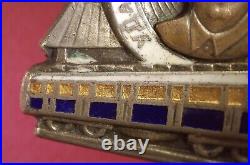
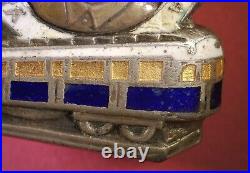
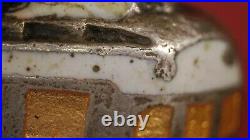


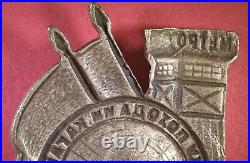
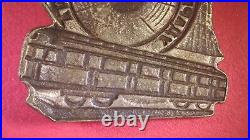

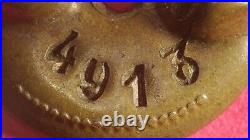
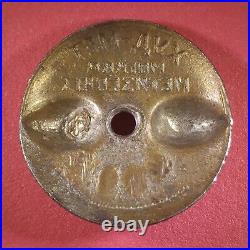
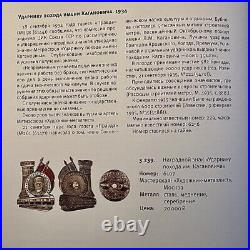
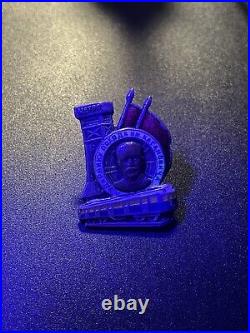

Soviet Badge “To The Shock Worker Of The Campaign Named After Kaganovich”. Material: steel, coper & silver plating. Workshop: Metallurgical artist Artel, Moscow. Height: 37.63 mm. Width: 26.98 mm. Weight w/ screwplate: 11.593 g. Weight w/o screwplate: 9.195 g. On September 18, 1934, the newspaper “Pravda”? . 258 (6144) reported that the commission of the Presidium of the Central Executive Committee of the USSR for the consideration and approval of breastplates approved the Metrostroy badge “Udarnik of the Kaganovich Campaign”. The image and conditions for obtaining the badge have been published. An indispensable condition for obtaining a badge is working without defects, systematically fulfilling the work plan day after day and passing the technical minimum. In case of violation of these obligations, the badge may be taken away by decision of the meeting of shock workers. There are no state privileges associated with receiving a badge. About 7,000 thousand badges were produced by the Metallurgical artist Artel of the Metallurgical Union. On September 21, 1934, the newspaper “Pravda”? . 261 (6147) wrote that in Sokol-National Park of Culture and Recreation named after. Bubnov, a 5,000-strong meeting of metro builders took place, dedicated to the October Campaign named after L. The best shock brigades of Kraevsky, Kholod, Yaremchuk, Ustinova and individual shock troops were given campaign badges. Kaganovich – only 35 pieces. 582 brigades, numbering 20,000 shock troops, took part in the campaign Izvestia newspaper, September 21, 1935, ? . Meetings of badge workers were held, where important construction issues were discussed Stories of metro builders. By February 1935, about 6,000 builders had been awarded badges Izvestia, February 9, 1935, ? . Minimum known number: 229, maximum known number: 6256 The number was placed on the nut. This is a beautifully designed and scarce badge. It boasts full enamel with visible age spots. There is moderate to light wear on the plating. The reverse shows excellent toning from age. While the threaded post is bent it appears to be full length with heavy wear on the machine threads. The screw plate is original to the piece and denotes this badge’s issue number of #4913. The screw plate is stamped with HUD-MET. / MOSCOW / METIZSOYUZ. The screw plate threads on without struggle and does not have excess play when on the post. Ultraviolet image included to show lack of modern repairs to the enamel. Awards of the USSR for labor and social activities #238. Award badges of heroes and shock workers of labor #3.76. Signs of law enforcement agencies of the USSR #2.3.30. Soviet Badges, Volume 2: Law Enforcement Agencies, by Igor Sysolyatin, C 2020. Reach out to me with any and all questions you have. All sales are final. Condition and authentication are “as seen”.


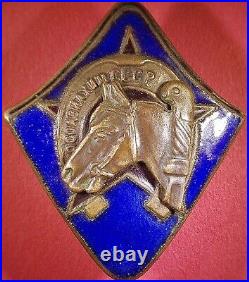
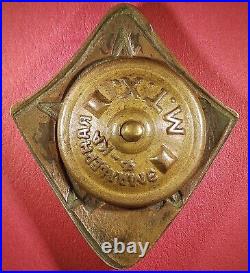
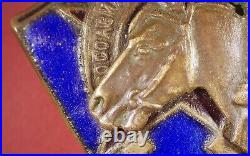
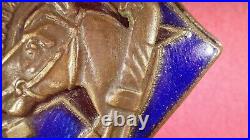
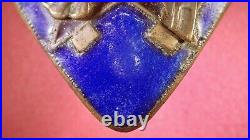
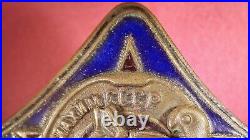
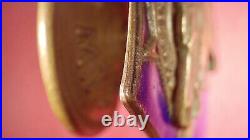
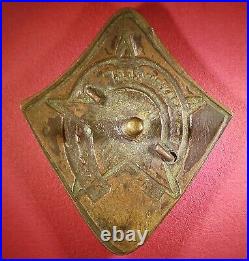
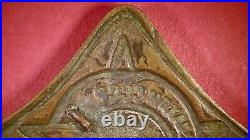
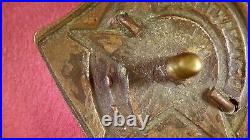
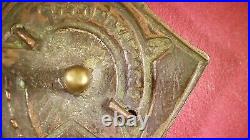
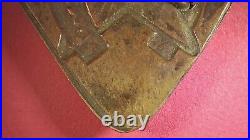
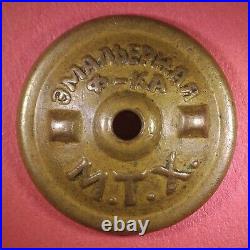
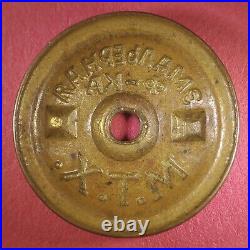

Height: 41.08 mm. Width: 35.28 mm. Weight (w/ screw plate): 13.785 g. Weight w/o screw plate: 8.489 g. Screw length: 11.5 mm. The recipient of the sign had to pass initial cavalry training in society circles, as well as have skills in raising, caring for and training horses both for use in agriculture and for the Red Army. Reach out to me with any and all questions you have. All sales are final. Condition and authentication are “as seen”.


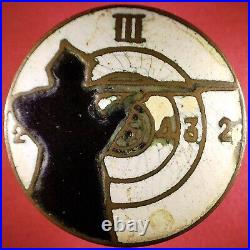
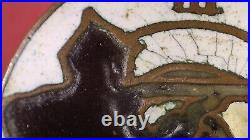
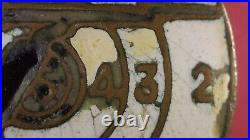
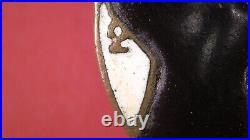
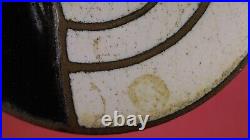
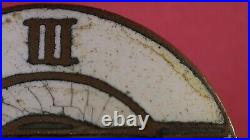
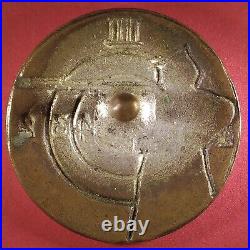


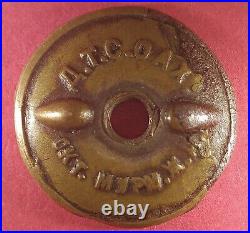
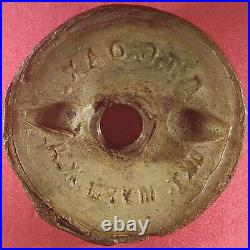

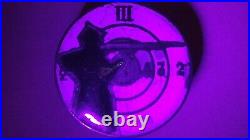

Those who fulfilled a certain standard were assigned the appropriate shooting category and awarded this badge.


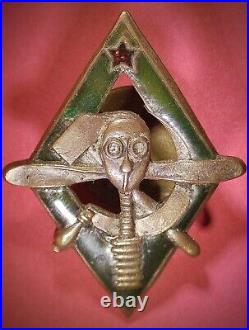
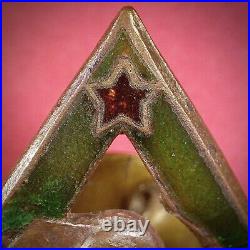
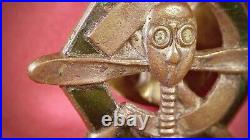
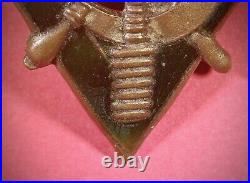
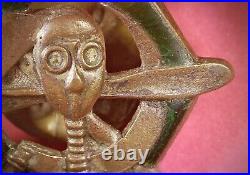
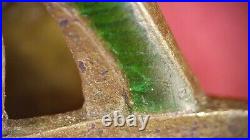

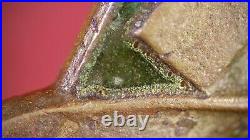

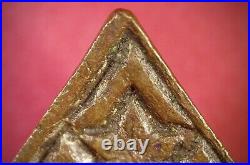
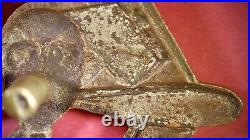

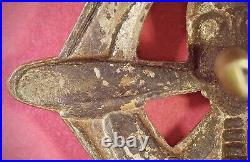


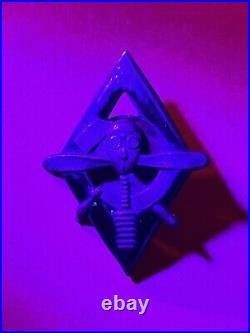
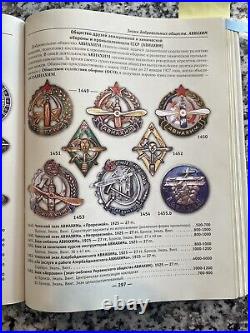

Badge for graduates of AVIAKHIM instructor courses. During its existence, the society has issued more than a dozen different signs.


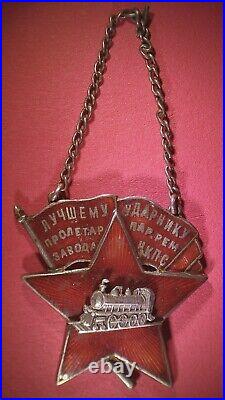
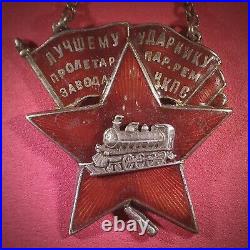
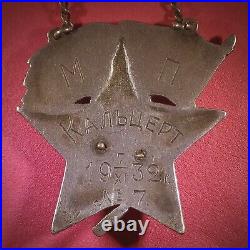
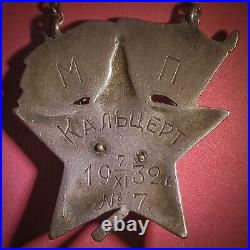
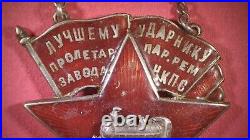
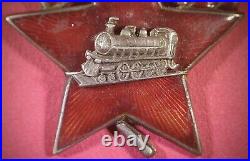
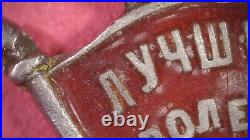

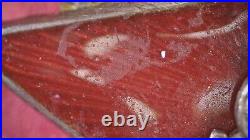
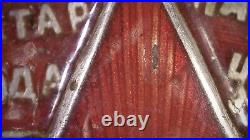
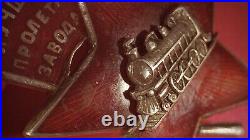
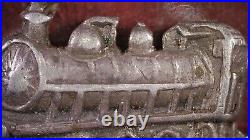

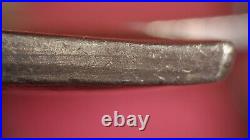
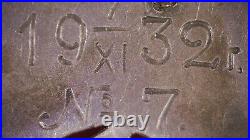
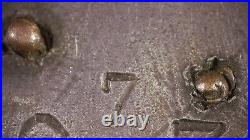
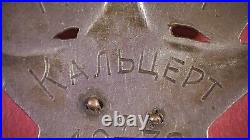
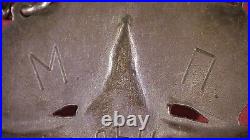

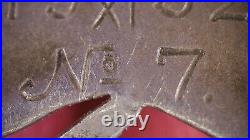
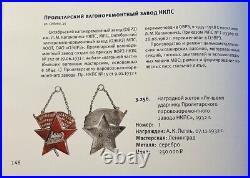
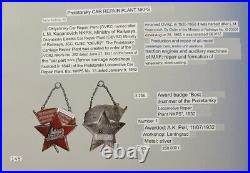
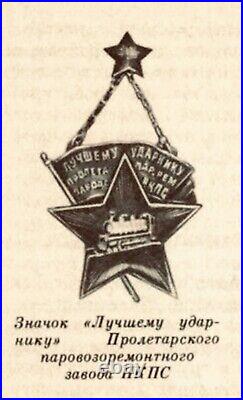
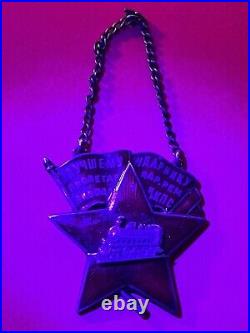

By Order of the Ministry of Railways No. “???????????????????????????????????????????????????????? “. The shape of the sign is a windswept banner with a large red Star in the foreground with a superimposed steam locomotive.


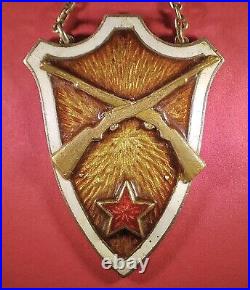
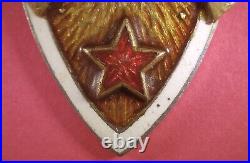
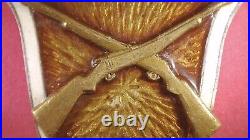
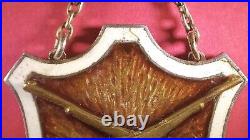
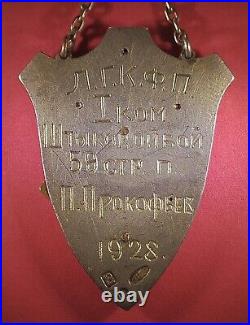
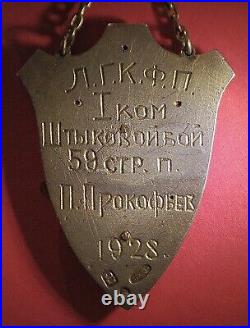
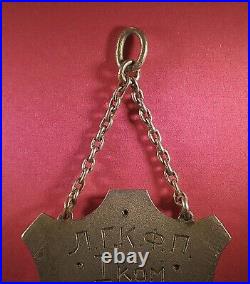
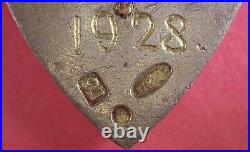

Thank you for looking! ???? stands for Leningrad City Committee for Physical Training. It conducted fencing competitions, and this is one of their prize badges. I was able to receive the following translation. This is not 100% clear because this is where they said something like “1st Prize”, “2nd Prize”, etc. Is not a short version of anything familiar. My best guest is, it stands for “team”, which would then mean the first prize in the team event. ?????????? – Bayonet Fencing. 59th Infantry Regiment. Usually of the instructor. The round stamp at the bottom is the mark of this whole competition system. The oval stamp is the state mark certifying this object is made of silver of specific proof. The square stamp F. Is the initials of the jeweler who made this, G. Width (widest point): 27.93 mm. Height (not including suspension): 37.15 mm. Weight: 12.927 g. Reach out to me with any and all questions you have. All sales are final. Condition and authentication are “as seen”.


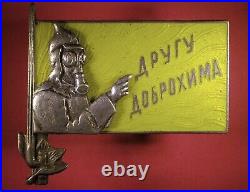
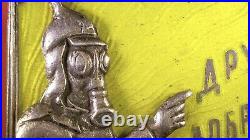
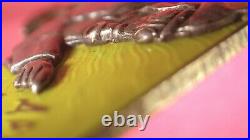
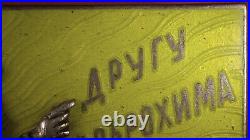
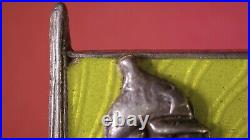
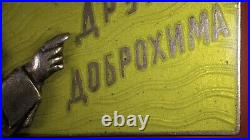
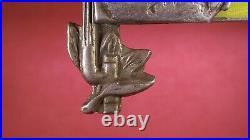
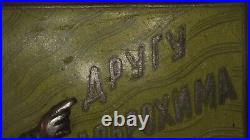
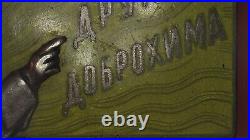
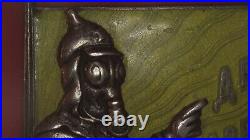
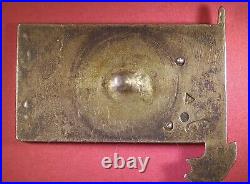
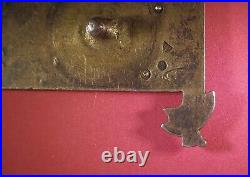
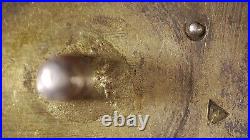
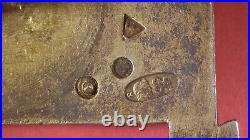
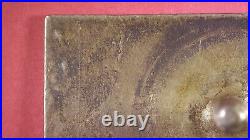


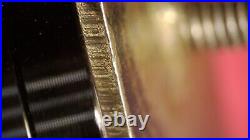

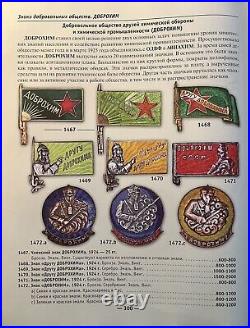


Badge to a friend of DOBROKHIM. Height (flag): 17.60 mm. Height (bayonet): 28.83 mm. Width: 31.88 mm. Screw length: 7.58 mm. Weight: 10.649 g. Made of solid silver and enamels. The reverse shows 3 silver hallmark stamps. The badge is in a great, above average condition with its details crisp and an appealing patina to the silver. The green enamels are mostly present and without repairs but does show a small chip in the upper left corner. There are also some surface scratches to the enamel (all pictured). Please note the absence of the screwplate. I’ve also included an ultra violet image to show the lack of modern repairs to the enamel. It also does a good job highlighting the surface condition. The Society of Friends of Chemical Defense and Chemical Industry (DOBROHIM) is a defense public organization formed on May 19th, 1924 in Moscow. The main task of DOBROKHIM was to assist the state in the development of the chemical industry, the chemicalization of agriculture, the deployment of the promotion of chemical knowledge among the population and its preparation for anti-chemical defense. In May 1925, the Society of Friends of the Air Fleet (ODVF) and the Society of Friends of Chemical Defense and Chemical Industry (DOBROHIM) merged into one Society – AVIAHIM of the USSR. We want to create a gas fence in which a new society will be built. Reach out to me with any and all questions you have. All sales are final. Condition and authentication are “as seen”.


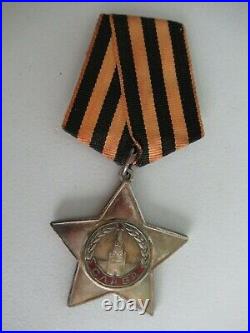
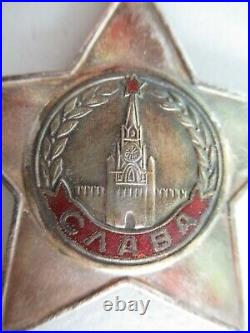
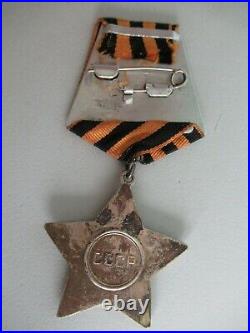


100% ORIGINAL ISSUE PIECE. Argentina, Brazil, Chile, Colombia, Romania, Bulgaria, Mexico, China, Macau, Turkey, United Arab Emirates, Montenegro. CANADA, USA, UK, IRELAND, AUSTRIA, DENMARK, SWEDEN, NORWAY, FINLAND, GERMANY, FRANCE, BELGIUM, ITALY, SWITZERLAND, NETHERLANDS, LUXEMBOURG, AUSTRALIA, AND NEW ZEALAND.








































































































































































